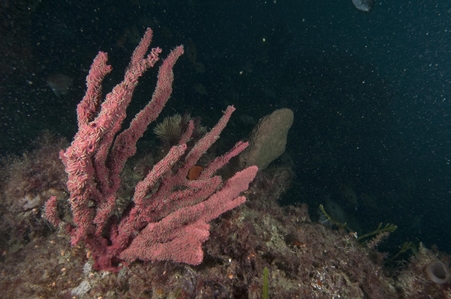General Description
A dark pink sponge species with encrusting to branching form. Size of about 30 cm.
Biology
This species and other sponges of the genus Dendrilla are not common but can be found in oceans from Antarctica to the tropics.
Habitat
Reef and jetty areas, at depths of 0-50 m.
Sponge gardens
Reefs
Distribution guide
Indo-Pacific area, including records from Port Phillip and Victoria.
Species Group
Depth
Shore (0-1 m)
Shallow (1-30 m)
Deep ( > 30 m)
Water Column
Max Size
30 cm
Diet
Plankton or particles
Commercial Species
No
Global Dispersal
Recorded in Australia
Identify
Conservation Status
- DSE Advisory List : Not listed
- EPBC Act 1999 : Not listed
- IUCN Red List : Not listed






